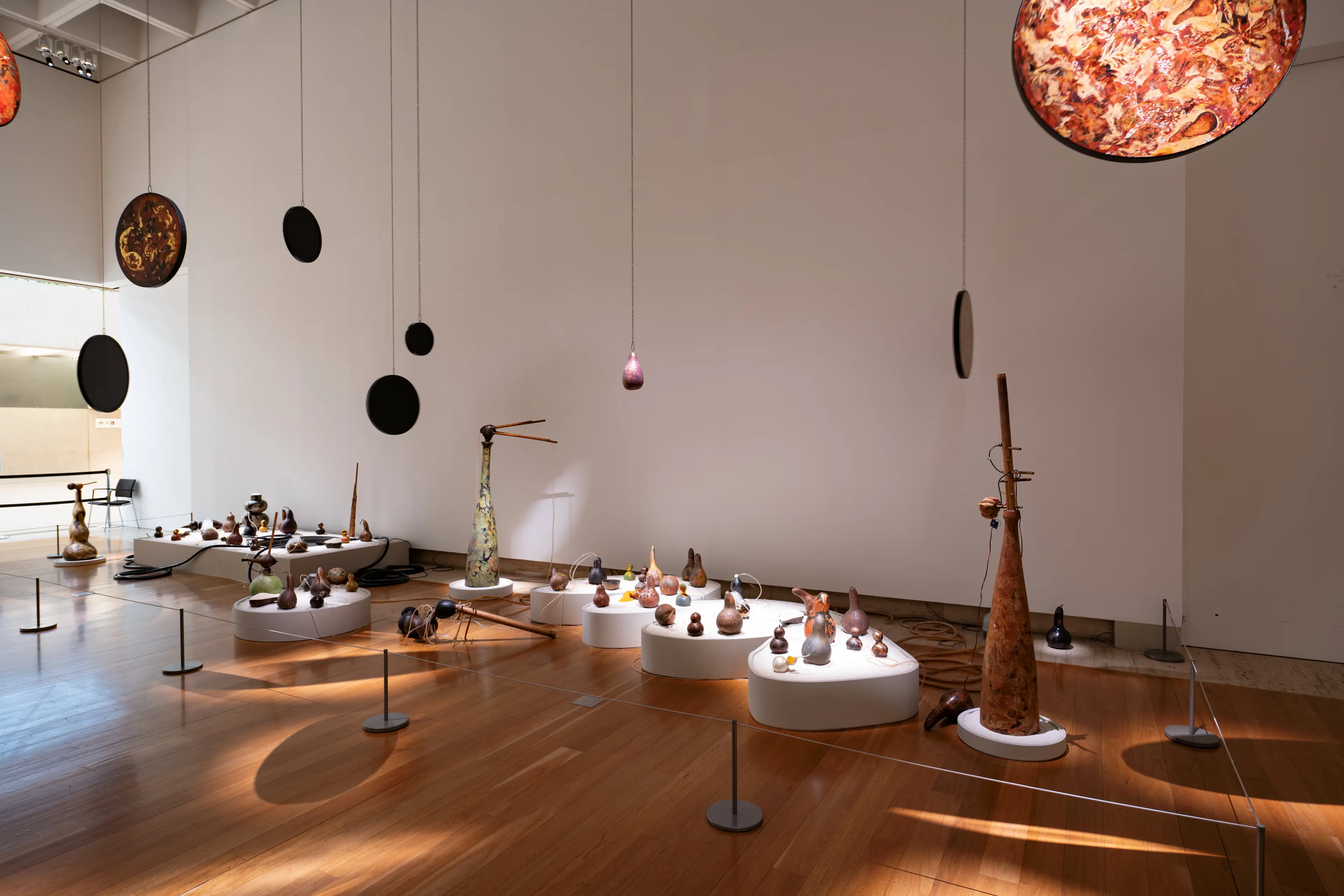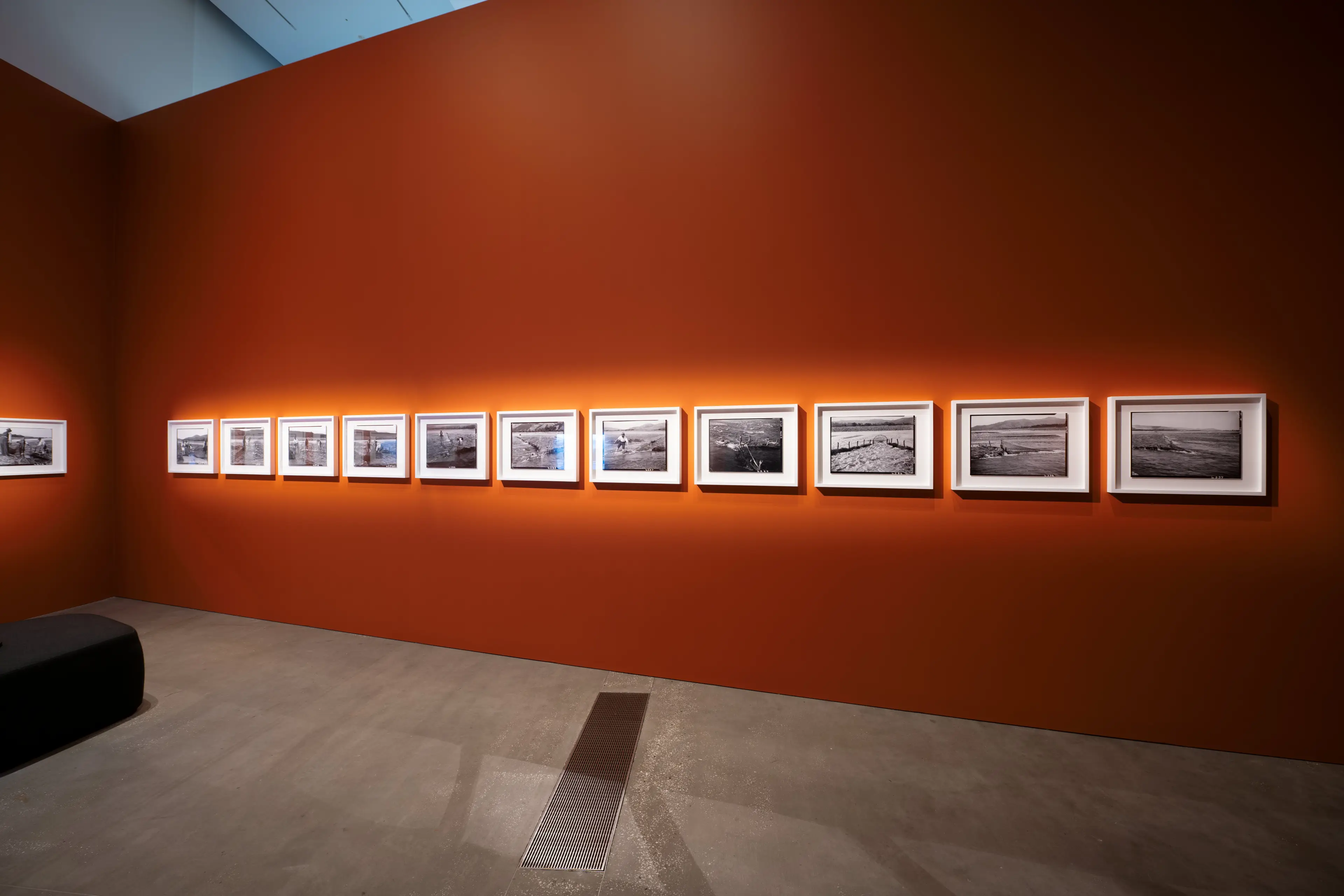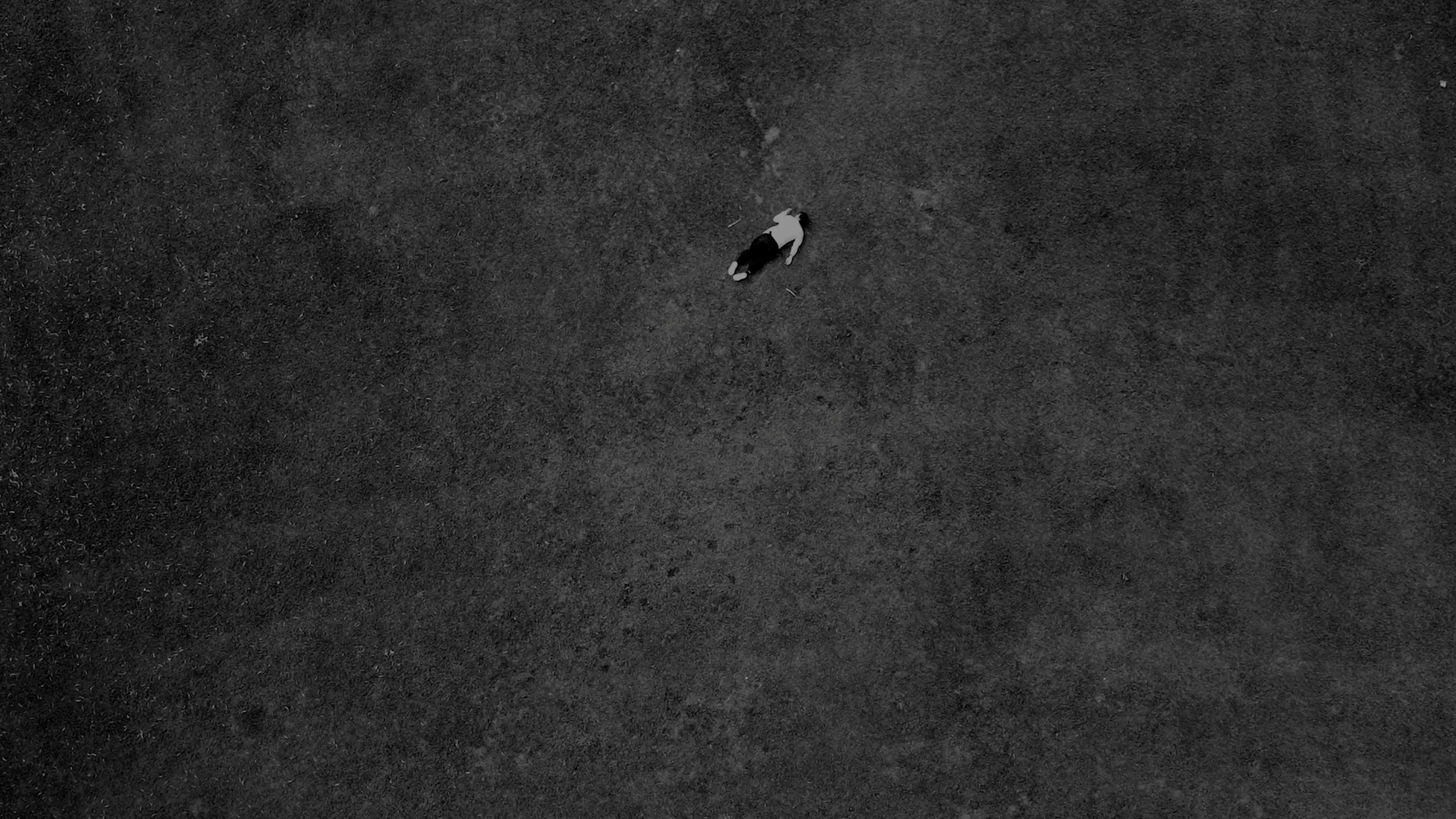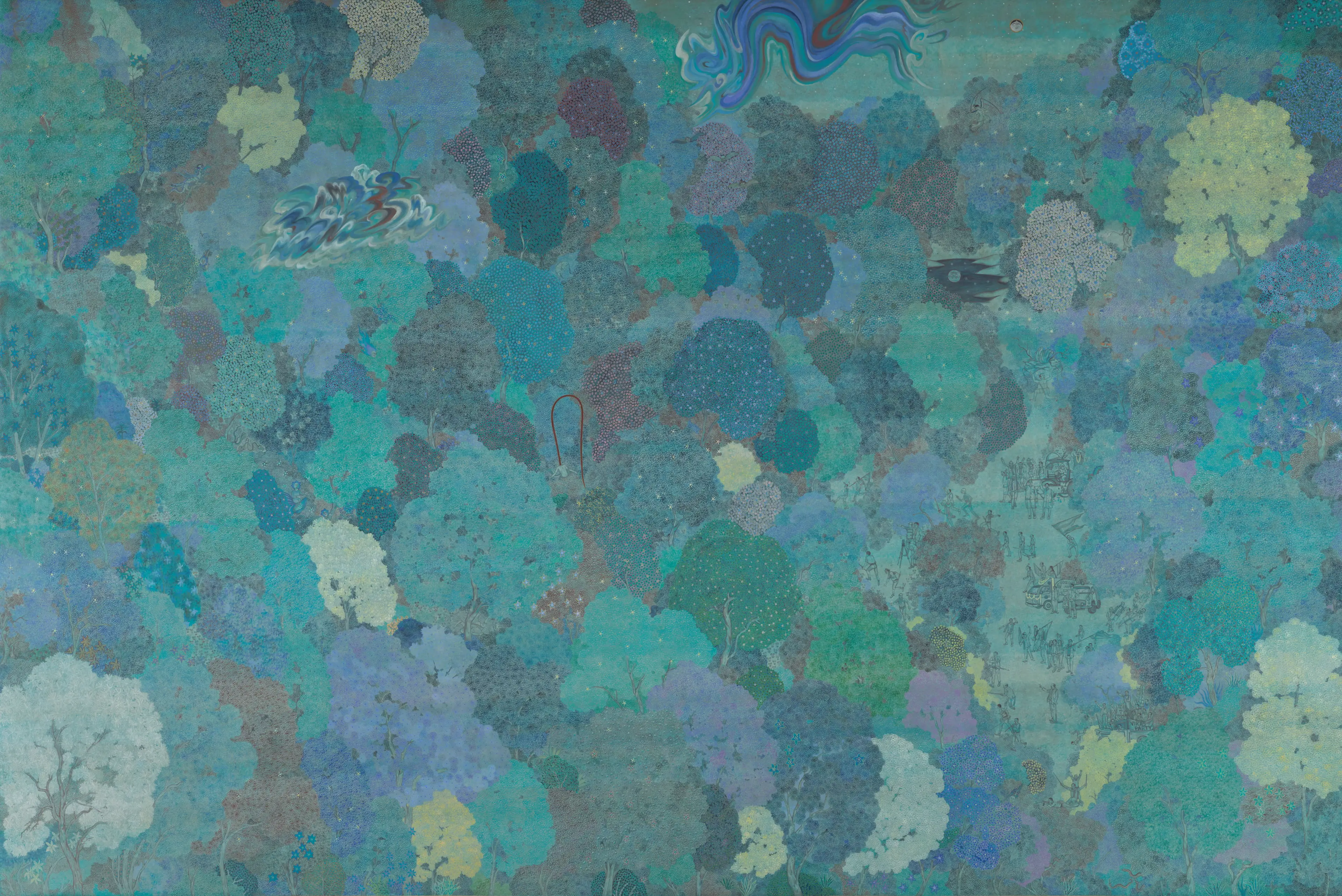The last two editions of the Asia Pacific Triennial of Contemporary Art each encountered a natural disaster. The 10th triennial was met with Brisbane’s devastating floods of 2022. This year, upon my visit to see its latest iteration, visitors and the larger city were bracing for Cyclone Alfred—the first of its kind to hit the region in half a century. Just as the cyclone has embedded itself into the city dwellers’ everyday lives and thoughts, many works on view contend not only with the social and environmental urgencies of specific locations but also visually articulate the human pursuits of resilience, failures, and victories in the face of environmental change and time.
A highlight in the triennial is He Uru Manuka, He Uru Kanuka (2024) by AWA (Artists for Waiapu Action) art collective. Their project fleshes out time over a century and renders the setting—the Waiapu River—as impacted by climate change and responsive to its movements. This endeavour also builds on the extensive research of one of its members, Natalie Robertson, who has proactively documented and written about the Ngāti Porou people’s deep-rooted connections to the river. AWA’s project begins in the anteroom lined with archival photographs of the 1923 Waiapu expedition. This historical event recalls statesman Sir Āpirana Turupa Ngata, his family, and Te Rangihīroa making a pā tauremu, a stone fish trap traditionally used in the area. The deep contrasts of the monochromatic photographs hint at a scorching sun, exacerbating the already-laborious process of making the pā tauremu: the trap is knotted, constructed, and successfully assembled in the flowing river. The accompanying text, however, ruptures this moment of success: these photographs capture the last recorded catch of the upokororo, or the New Zealand grayling, once endemic to the Waiapu River.
Themes of degradation underscore AWA’s installation. Passing the room of photographs, we come face-to-face with an enlarged structure: a replica of an actual pā tauremu made by the collective and members of the Ngāti Porou Raukūmara Pae Maunga Restoration Project in the Waiapu River. It becomes clear that something more than just the upokororo’s extinction has occurred since the 1923 expedition. Despite the collective’s efforts, their pā tauremu remained completely empty, and no fish were caught. Standing in the space with both visual and contextual information at hand, we bear witness to an ecosystem that has yielded to the force of time. Knowledge of anthropogenic factors like pollution and climate change, as well as the cyclones and floodings that happened along the way, vivify the altered reality of the Waiapu River. The collective’s exploration of two different temporalities within a single place grants affective weight to the deterioration of land and the voices that seek to protect it, both past and present.



Trương Công Tùng’s A disoriented garden (Khu Vườn Lạc Hướng) (2024) features localised materials, both natural and man-made, in constant interaction. Upon further inspection, we identify the lacquer discs suspended above like celestial bodies referencing archival photographs of forest fires and war. Under these evocations of violent histories are gourds. In Vietnam’s Central Highland, where the artist is from and actively advocates through both his individual work and his involvement with the collective Art Labor, this cultivated crop serves multiple purposes. It functions as both a musical instrument and a vessel for carrying water. In Southeast Asia, it is a motif often employed as a symbol in many Southeast Asian folklores. Trương connects the gourds via an irrigational system of plastic tubes. Embedded within it, local seeds and stones traverse from one gourd to the other; this cycle is performed, again and again. The violence and destruction outlined in the work’s provenance are juxtaposed with the almost-tranquil silence that manifests in the space. Through this, Trương’s garden invokes the dialectic between violence and destruction, and the resilient systems of nature, honouring the interconnectedness of life and its materials that flow on in spite of the looming fires in history.
Tucked into a dark corner of the gallery, Ishu Han’s particularly thought-evoking artwork was almost missed during my visit. Han’s practice has long engaged with the histories of Chinese migrants at site-specific places through performance. Likewise, single-channel video Not Ocean (2024) presents Han painstakingly swimming chest-first across a flat patch of land at a former Mount Taylor gold mine in Brisbane. The viewer observes this scene from above, mercilessly watching Han’s arduous yet somewhat comical journey, pursued in a dreadfully slow fashion. The neighbouring footage, Cultivating the Waves (2024), shows Han as a labourer, performing an impossible task of “harvesting” the ocean with a hoe. The painful interactions with these sites of estrangement, the artist claims, “become a place of belonging.”1
There is value in this seemingly endless, but conscious struggle; a Sisyphean element in Han’s conviction that French philosopher Albert Camus may have lauded as “the lucidity that was to constitute his torture at the same time crowns his victory.”2 This “victory” stems from the courage required in struggle. Within these single-channel projections, Han engages with the labourers in Australia’s History, unrelenting in the face of life’s unending challenges. What is interesting is Han’s choice of depicting this resilience by using two of the three physical constants of terrestrial life, water and land. The viewer, of course, objectively observes Han’s efforts in the stillness of the third constant, air. There is an almost metaphysical interplay of art and culture within this space, as the viewer is gripped with the realisation that these projections, and by extension Han, will continue whether they are present to observe or not.



Varunika Saraf thrives in her critical commentary on political violence, often addressing it with remarkable directness. However, in Thieves in the Forest (2024), the viewer’s awareness of this political dimension is delayed, as they are first captivated by its lush trees and visual splendour. Upon close inspection, the textured surface dissolves into precise linework and reveals otherworldly beings that embody the landscape: slithering snakes, a decapitated body and faces without silhouettes. On the right corner, a band of army personnel and politicians proudly impinge the forest and slowly clears it out. The troupe is accompanied by a vehicle bannered “Vikas (Development) Party,” and another, slightly obscured, “Good days are coming.” Saraf’s work sharpens the viewer’s awareness of humans’ incognisance—or ignorance—to what lies within the forest, both literally and metaphorically.
Painted at the beginning of India’s elections in 2024,3 the work offers a timely caution of blind optimisms often imbued into the aspirations of national development by political parties and their followers. It implores us to consider what belies such aspirations, and the losses at stake should we choose to believe them. A further invocation occurs during the interaction between the viewer and the artwork: It is clear to readers of colonial and imperialist histories that when people turn to claiming land in the name of progress, good days seldom come. Thieves in the forest is allegorically troubling. We note that the artwork’s namesakes, the “thieves” take up only a small portion of the total space. This size difference is ominous, as it hints at an unforgiving potential for loss, the mass of undiscovered culture, biodiversity, history, stories and legends that will likely be destroyed as a result of relentless anthropogenic expansion.
Many works, including the ones featured in this review, were made no earlier than two years ago. Through the immediacy of their works, the artists reveal specific realities to which they share resonance with. The technology of a past century is dutifully recovered only to be met by the reality of a fishless river. Forms of organic life continue despite the fires that lay waste to the land. Futile attempts like reaping the ocean waves for harvest continue with an absurdist sense of triumph. A precarious ambition threatens the existence of today’s abundance.
The 11th Asia Pacific Triennial of Contemporary Art is on view at Queensland Art Gallery and Gallery of Modern Art in Brisbane, through 5 May 2025.
Cover image: Trương Công Tùng / Việt Nam b.1986 / Khu Vườn Lạc Hướng (A disoriented garden) (installation view) 2023–ongoing / Mixed-media installation: a collaboration between humans, machines, plants, insects, light, darkness, soil, stone, water, wind, rain and the spirits / Installed dimensions variable / Commissioned for APT11 / Courtesy: The artist / © Trương Công Tùng / Photograph: C Callistemon © QAGOMA.
Notes:
- Ishu Han, Hanishu.com consulted March 25, 2025. ↩︎
- Albert Camus, The Myth of Sisyphus, 2nd ed. (Vintage International Edition, 2018), p. 121. ↩︎
- Tarun Nagesh, “Varunika Saraf,” The 11th Asia Pacific Triennial of Contemporary Art. (Queensland Art Gallery, 2024), p. 174. ↩︎
Last Updated on April 22, 2025
About the author:
- Tags: HOME


